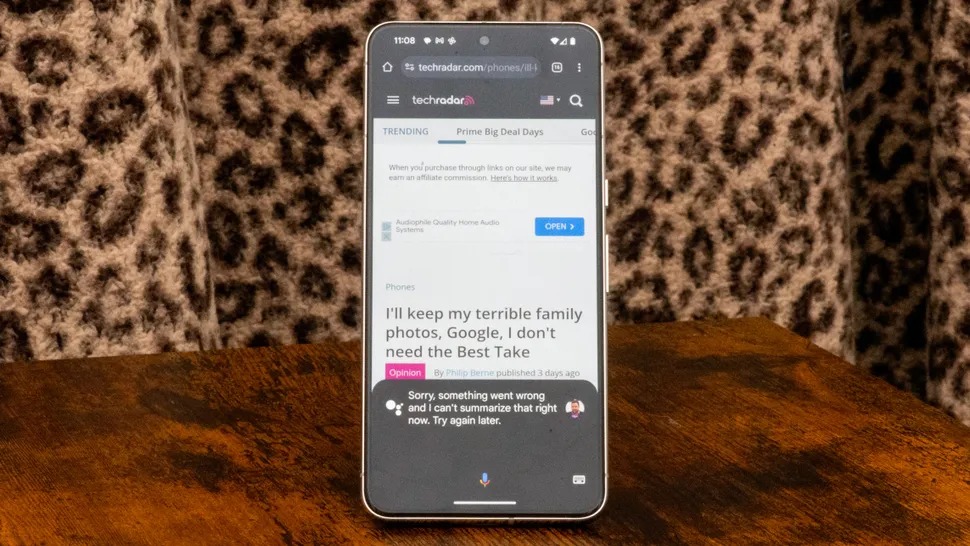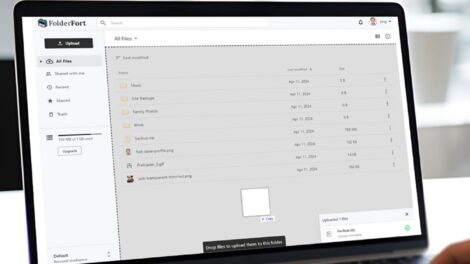Technology fans around the world eagerly await the arrival of Google’s Pixel 8 and Apple’s iPhone 15 later this year. However, according to concerning insider reports, international buyers outside the United States will receive inferior versions of these flagship devices.
Let’s analyze how the Pixel 8 and iPhone 15 offered in global markets will differ from US models, why Google and Apple may bifurcate their product lines this way, and what consumers can do to decide whether purchasing is still worthwhile given expected downgrades.
Pixel 8 – Relegated to Weaker Tensor Chip Internationally
Google’s in-house Tensor chip represents one of the most powerful innovations driving the Pixel 6 and Pixel 7 series’ performance. However, based on supply chain analysis, the Pixel 8’s next-gen Tensor chip will come in two variants:
Tensor G3 (US): More advanced CPU and GPU for maximum speed
Tensor G3 Lite (International): Cost-reduced version with weaker performance
On paper, the Tensor G3 Lite will still outpace the prior Tensor G2 in raw power. But Google limiting its premium flagship chip to US models suggests the Pixel 8 will lag behind rivals like the Galaxy S23 globally.
Hardware benchmarks of the Tensor G3 Lite remain unverified, but early estimates point to around a 20% drop in processing and graphics capability versus the full Tensor G3. For users outside America hoping to experience Google’s impressive in-house silicon, this is undoubtedly disappointing.
Google’s apparent reasoning is Tensor G3 supply limitations. But critics counter that if Apple can ship its latest Bionic SoCs worldwide in iPhones, Google should manage the same for what it claims is a revolutionary Tensor mobile chip. Withholding the true flagship Tensor 3 from international buyers casts doubt on Google’s claimed commitment to the Pixel 8.
iPhone 15 – Crucial Camera Upgrades Restricted to US Models
Meanwhile, Apple’s next-generation iPhone 15 faces its own troubling rumors surrounding international rollout. As with the Pixel 8, the iPhone 15 is tipped to reserve its most significant hardware upgrade exclusively for the US market.
Reports indicate that only the US iPhone 15 models will include Apple’s new 48MP primary camera. This upgraded main sensor would represent one of the few major camera innovations since the iPhone 11, enabling crisper digital zoom, enhanced night mode photographs, and more.
However, the global iPhone 15 is said to retain the same 12MP primary camera as the past four iPhone generations. For international buyers hoping to step up their photography game with the iPhone 15, this omission stings when US buyers get exclusive access to cutting-edge camera technology.
With the global iPhone 15 also expected to continue lacking support for superfast mmWave 5G available to US customers, Apple seems to be sustaining its trend of reserving the best features for its backyard. As a trillion-dollar company, supply chain hurdles ring hollow as an excuse – especially as Chinese manufacturers like Xiaomi manage to ship 108MP phone cameras worldwide without issue.
Why Tech Giants May Segment Product Offerings Geographically
On the surface, it makes little sense why Google and Apple seem willing to ship degraded versions of their premium flagships to international markets. But analyzing the broader consumer electronics landscape reveals a few driving factors behind this trend:
- Maximizing premium sales in core markets – Prioritizing supply for US consumers lets Apple/Google capitalize on massive domestic spending power.
- Streamlining production logistics – Simpler product SKUs with regional segmentation aids inventory management and movement.
- Regional component suppliers – Sourcing some parts like modem chips regionally eases supply strains.
- Market-specific regulation – Differences in rules regarding things like mmWave 5G help drive regional variation.
- Testing future segmentation strategy – Companies may be piloting regional-exclusive features for future monetization.
- Reducing costs – Offering downgraded hardware with lower materials cost boosts profit margins in non-core markets.
While these motivations make fiscal sense for Google and Apple, they directly disadvantage and devalue international customers. For years, both companies have touted serving all users equally – but bifurcated flagship products contradict that ideal.
Should International Buyers Accept Downgraded Phones?
Given the apparent plan to relegate international buyers to inferior Pixel 8 and iPhone 15 models, should customers worldwide simply accept this diminished treatment? Or would there be too much compromise involved versus the still-premium price tags?
On the one hand, owning the baseline version of a new Pixel or iPhone still provides a cutting-edge experience thanks to smooth software and essential upgrades like improved displays and battery life. And the Tensor G3 Lite and 12MP camera will still outclass budget phone components.
But accepting a purposefully downgraded version of a $1000+ flagship feels like a slippery slope. If global customers demonstrate they will tolerate being treated as second-class technology consumers, the segmentations are sure to become even more pronounced. And the discounts for inferior hardware unlikely to be substantial enough to justify the compromise.
As a result, international shoppers may wish to vote with their wallets unless Google and Apple show willingness to equally prioritize all markets with equitable product allocations. With fierce competition from brands like Samsung and Xiaomi, declining sales could compel change.
Of course, another option is seeking out US models through gray market imports – but this introduces complexities for things like warranty support. There are no perfect solutions, and international buyers will need to weigh options carefully.
Key Questions on International Pixel 8 and iPhone 15 Models
Given the reports of downgrades, shoppers worldwide considering the Pixel 8 or iPhone 15 have valid concerns. Here are answers to some key commonly asked questions:
How much of a performance hit will the Tensor G3 Lite deliver?
Reports indicate around a 20% drop in processing and graphics power versus the full Tensor G3. This is significant, but the Pixel 8 will still outpace Pixel 7 and most mid-range phones.
Will the camera quality be poor on the global iPhone 15?
No, but it will lack the enhanced low-light and zoom strengths of the rumored 48MP sensor exclusive to US models. The 12MP camera will still produce great shots.
Will 5G be affected on the international models?
The global iPhone 15 is already expected to lack cutting-edge mmWave 5G offered in the US. Pixel 8 5G should be on par worldwide.
How much cheaper should I expect international versions to cost?
Likely not enough to make the downgrades worthwhile – perhaps $50-100 discounts from US pricing based on component price differences.
Can I buy the US model internationally?
Yes, through grey market imports, but you may lose out on warranty coverage. Long term reliability could suffer.
Will performance degrade over time without the best chips?
Somewhat – the US models will likely support OS updates for a year or two longer than global versions. Future apps may lag.
While not dealbreakers for everyone, assessed holistically, the downgrades add up to meaningfully inferior versions of what should be uniform flagship-class devices.
The Bottom Line – International Shoppers Lose Out
Based on all indications, Google’s Pixel 8 and Apple’s iPhone 15 will repeat and exacerbate the companies’ unfortunate trend of offering downgraded models to international markets.
With the Pixel 8’s weaker Tensor chip and iPhone 15’s outdated camera, foreign buyers are right to feel slighted by receiving substantively inferior versions of products marketed as premium flagships. This segmented approach damages perceptions of Google and Apple as worldwide brands.
Of course, supply chain complexities and production costs contribute to the rationale behind offering divergent regional models. But this rings hollow for trillion-dollar corporations touting cutting-edge innovation. If Chinese phone brands can sell excellent uniform flagships globally, Google and Apple have little excuse not to.
For international shoppers passionate about Google and Apple devices, the situation is certainly frustrating. There seem few great options beyond accepting inferior 2023 phones, seeking grey market US imports, or sending a message through their wallets and holding off on purchases until policies change.
One thing is certain: by releasing segregated flagship models, Google and Apple risk training their international customer base to accept second-tier treatment. This slippery slope could increasingly stratify the user experience between top-tier US buyers and everyone else worldwide. For two companies claiming to connect the globe, this alienation of international users represents reputation risk. Here’s hoping they soon right the ship.
Frequently Asked Questions on Regional Pixel and iPhone Models
Here are answers to some additional frequently asked questions on the Pixel 8, iPhone 15, and their downgraded international models:
Will battery life be worse on the international models?
No major differences are expected for battery performance between regions. All models should deliver roughly similar battery lifespans.
Will I lose cellular carrier compatibility by buying another region’s model?
Possibly – US models may not support certain international 5G frequency bands or carriers if imported elsewhere. Do research first.
How else might US models differ from international versions?
There could be additional minor regional variations beyond the main chip and camera downgrades mentioned.
Will wireless charging work the same worldwide?
Yes – Google and Apple use standardized Qi wireless charging so all models will charge at the same speeds on certified chargers.
Are the exterior dimensions and screens the same worldwide?
Yes, the external industrial design and display should be identical across regional models. Just internal components will differ.
Will US phones have bigger storage capacities?
Unlikely – storage tiers should align across models worldwide, starting from 128GB for both Pixel 8 and iPhone 15 base variants.
Do I lose warranty if I import another region’s model?
Most likely – warranties are usually region-locked, so importing circumvents intended service coverage. Repairs could be costly.
Could I resell an imported US model locally after use?
Yes, you can resell an imported Pixel 8 or iPhone 15 secondhand. But first verify the phone works properly in your local markets.
While the US versions offer optimal performance, for many everyday users, the downgraded international models may still be serviceable options. But there are definite compromises involved consumers should consider carefully before purchase.










Add Comment